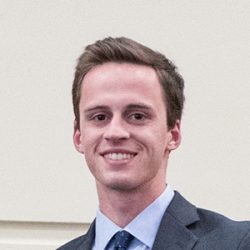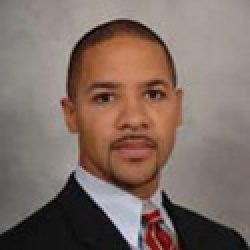 |
| Matthew N. Corrado |
The future looks bright for Matthew N. Corrado, a fourth-year aerospace engineering major who just learned he's a 2020 recipient of a National Science Foundation Graduate Research Fellowship. The 22-year-old New York native received the three-year fellowship to support his research proposal, "Effects of Mass Flowrate on Plasma Oscillations in a Hall Effect Thruster Discharge Channel."
"I knew I wanted to pursue a master's but this really gives me the option of earning a Ph.D.," he said during a telephone interview from his Cortland Manor, New York home.
"Working in Dr. [Mitchell] Walker's [High Power Electric Propulsion] Lab for the last three years has really changed the course of my career. This will let me keep going in a field that I think has some really great problems to solve."
The NSF Graduate Research Fellowship Program annually recognizes outstanding graduate students in science, technology, engineering, and mathematics disciplines who are pursuing research-based master's and doctoral degrees at accredited United States institutions. After he graduates with a BSAE from Tech in August, Corrado will use the NSF to fund his next three years of graduate study. That, he says, will allow him the
 |
| Prof. Mitchell Walker |
freedom to pursue the most interesting question in his field
"When I first got to Tech, I knew what I wanted to study but I didn't know what was possible. I didn't know what electric propulsion meant to space travel or how interesting it would be. But, after I did an internship for the solar electric propulsion mission at NASA Glenn the summer of 2017, I came back ready to find out. That's when I joined Dr. Walker's lab," he said.
"Then, at SpaceX I did thermal and fluid analysis for the Dragon Vehicle mission. That's the the mission that will be sending a crew to the International Space Station in a couple of months - the first mission to launch astronauts from US soil since 2011. I'm excited to have been a part of that."
Corrado's NSF research proposal will allow him to do a deep dive into the unique fluid dynamics associated with Hall Effect Thrusters.
"Very little is known about the effects of introducing an oscillatory input to a Hall Effect Thruster," he said. "In previous research, mass flow rate and other thruster inputs were held steady while the dynamic response was measured and this limited the generalizability of the results. Other models have been similarly inadequate for describing the full dynamic behavior HETs. My research will seek to provide insight into the dynamics of HETs and allow for future research to develop higher-fidelity dynamical models for thrusters."